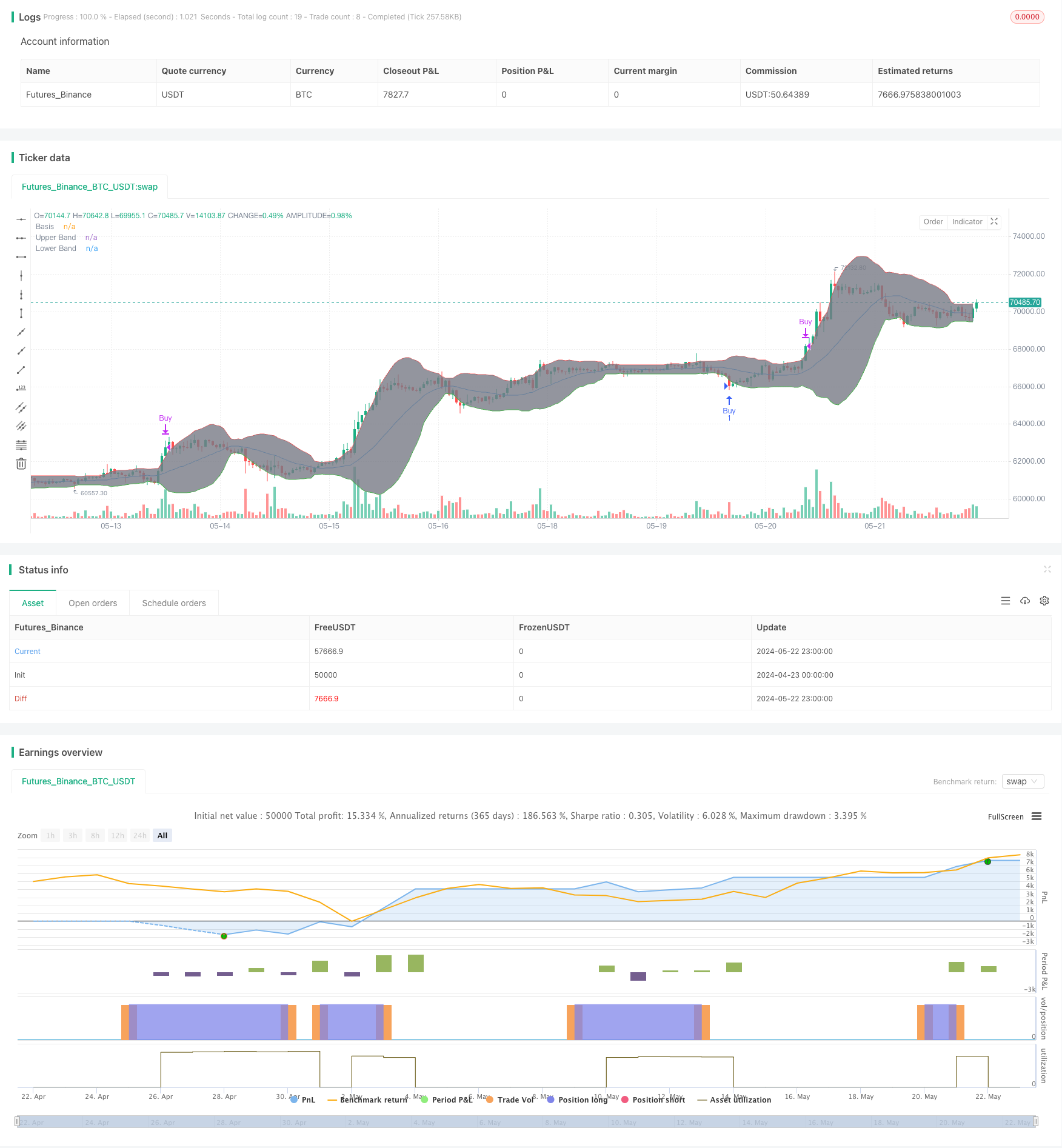
概述
该策略使用布林带(Bollinger Bands)和相对强弱指标(RSI)来识别交易信号。当价格突破布林带上轨或下轨,同时RSI高于超买水平或低于超卖水平时,产生买入或卖出信号。该策略旨在捕捉价格的极端波动,并利用RSI来确认趋势的强度。
策略原理
- 计算布林带的上轨、中轨和下轨。上轨和下轨分别为中轨加减标准差的倍数。
- 计算RSI指标,用于衡量价格的超买和超卖状态。
- 当收盘价低于布林带下轨,且RSI低于超卖水平时,产生买入信号。
- 当收盘价高于布林带上轨,且RSI高于超买水平时,产生卖出信号。
- 执行买入和卖出操作,并在相反信号出现时平仓。
策略优势
- 结合了价格和动量指标,提高了交易信号的可靠性。
- 布林带能够动态调整,适应不同的市场波动。
- RSI能够确认趋势的强度,避免在横盘市场中产生过多的交易信号。
- 策略逻辑清晰,易于实现和优化。
策略风险
- 在趋势不明显或市场波动较小时,该策略可能产生较多的假信号。
- RSI和布林带的参数选择对策略性能有重要影响,不恰当的参数可能导致策略表现不佳。
- 该策略没有考虑交易成本和滑点,实际应用中可能影响策略的收益。
策略优化方向
- 通过优化布林带的参数(如长度和标准差倍数)和RSI的参数(如长度和超买/超卖阈值),提高策略的适应性和稳定性。
- 引入其他技术指标或过滤条件,如趋势确认指标或交易量指标,以进一步提高交易信号的质量。
- 考虑交易成本和滑点,设置合理的止损和止盈位,以控制风险并提高策略的实际收益。
- 对策略进行回测和参数优化,并在不同市场环境下进行测试,以评估策略的稳健性。
总结
布林带RSI交易策略通过结合价格和动量指标,在价格出现极端波动时产生交易信号。该策略的优势在于逻辑清晰,易于实现和优化。然而,策略的性能依赖于参数选择,并且可能在某些市场环境下产生较多的假信号。通过优化参数、引入其他指标和考虑实际交易成本等方法,可以进一步提高策略的稳健性和收益潜力。
策略源码
/*backtest
start: 2024-04-23 00:00:00
end: 2024-05-23 00:00:00
period: 1h
basePeriod: 15m
exchanges: [{"eid":"Futures_Binance","currency":"BTC_USDT"}]
*/
//@version=5
strategy("Bollinger Bands + RSI Strategy", overlay=true)
// Bollinger Bands settings
length = input.int(20, title="BB Length")
src = close
mult = input.float(2.0, title="BB Multiplier")
basis = ta.sma(src, length)
dev = mult * ta.stdev(src, length)
upper = basis + dev
lower = basis - dev
// Plot Bollinger Bands
plot(basis, color=color.blue, title="Basis")
p1 = plot(upper, color=color.red, title="Upper Band")
p2 = plot(lower, color=color.green, title="Lower Band")
fill(p1, p2, color=color.gray, transp=90)
// RSI settings
rsiLength = input.int(14, title="RSI Length")
rsiOverbought = input.int(70, title="RSI Overbought Level")
rsiOversold = input.int(30, title="RSI Oversold Level")
rsi = ta.rsi(close, rsiLength)
// Buy and sell conditions
buyCondition = (close < lower) and (rsi < rsiOversold)
sellCondition = (close > upper) and (rsi > rsiOverbought)
// Execute buy and sell orders
if (buyCondition)
strategy.entry("Buy", strategy.long)
if (sellCondition)
strategy.close("Buy")
相关推荐